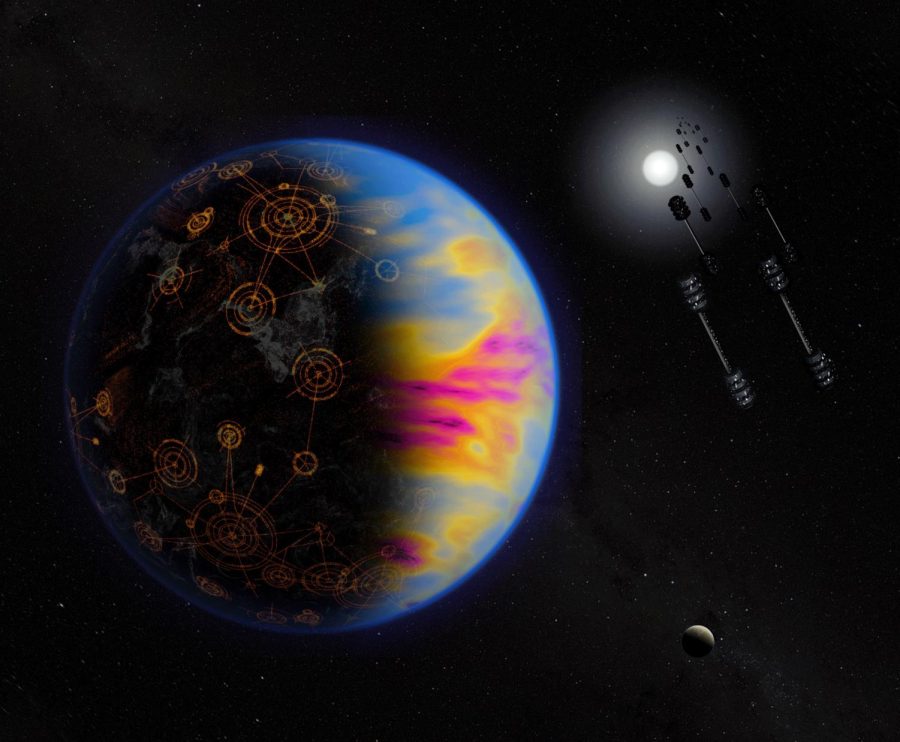2023 is the New Year, but what will 3023 look like? | 3 Scientific Perspectives
Less than three weeks ago, people all around the world rang in the New Year… that is the New Year of 2023. It is evident that 2,023 years is a long time even though it only accounts for a fraction of how long humanity has existed on Earth (something like 100,000 years), however, there is one question that has been consistent throughout this long duration: What will the distant future hold?
No one knows for certain, but this article will provide three views (one a general overview, another a kind of space colony, and a third another sort of space colony) of what humanity could be doing long after the New Year.
Kardashev Scale
In 1964, Soviet astrophysicist Nikolai Kardachev developed a mechanism by which to measure the advancement of alien civilizations and, by extension, our own. This tool is called the Kardashev Scale and assesses the degree to which human civilization has advanced and could advance on a scale of one to three.
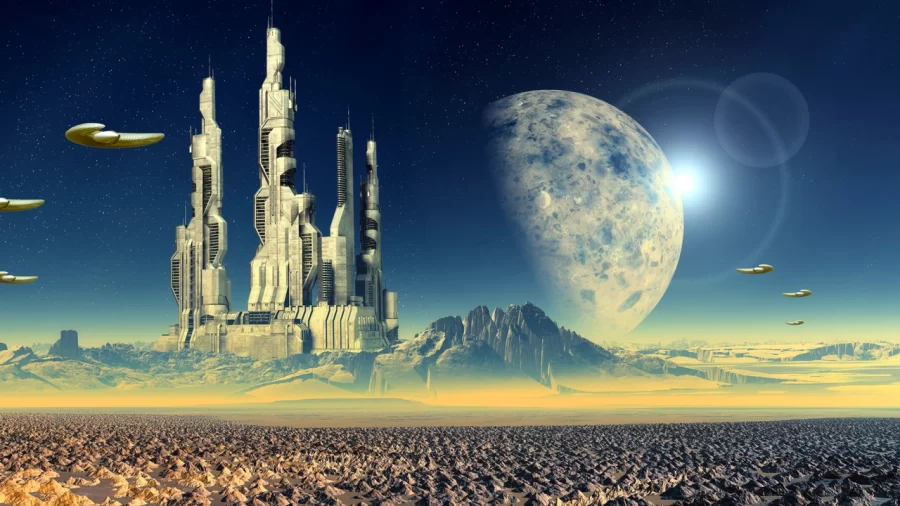
Type 1 Civilization
According to Kardachev, a Type 1 civilization will possess the ability to harness all the energy from its nearest star, in our case the sun, which means increasing our energy production over 100,000 times in order to reach this level. At this level, humanity would be able to capture and convert all the solar energy that hits the earth. According to famed astronomer Carl Sagan, we are currently about 0.72 on this scale.
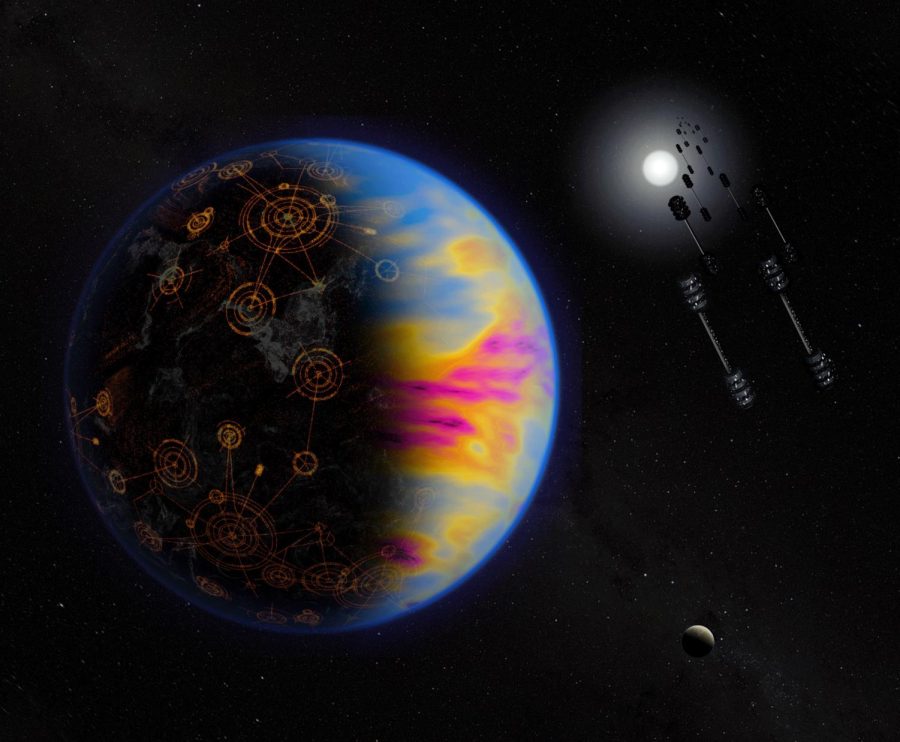
Type 2 Civilization
At the next level, a Type 2 civilization graduates beyond converting 100% of solar energy that reaches its surface (that is sunlight/starlight), but rather harnesses the entirety of its star’s energy. This could involve a Dyson Sphere, a ball that surrounds the sun. This idea was first proposed in 1960 by physicist and astronomer, Freeman Dyson, who imagined orbiting machines collecting energy from the sun.
Since 1960, scientists have expanded on Dyson’s original model with some proposing a series of mirrors orbiting the sun and facing towards it in order to maximize the amount of energy input.
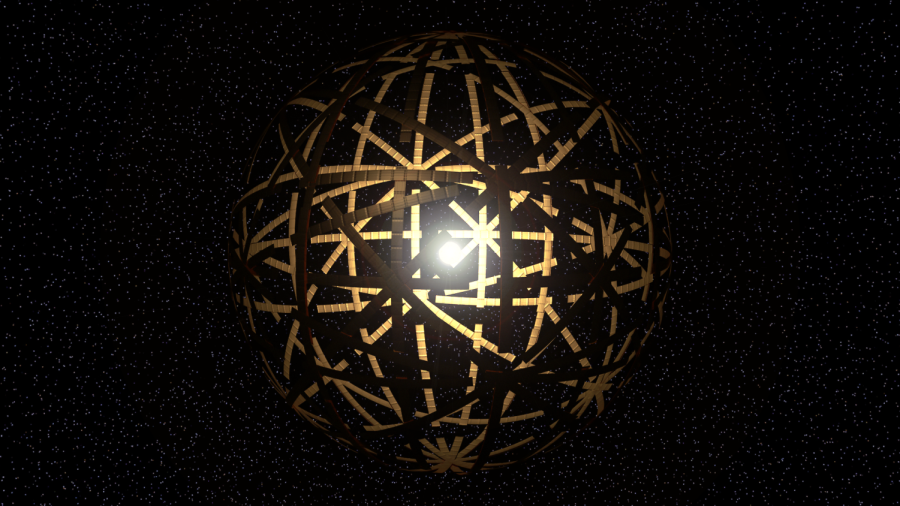
Type 3 Civilization
Kardaschev believed that humanity could progress to the level of a Type 3 civilization and ascend to near godhood, becoming masters of the entire galaxy. Human beings at this level (perhaps after hundreds of thousands of years of evolution) would likely evolve to become unrecognizable in terms of appearance (perhaps becoming cyborgs) and would possibly build armies of self-replicating robot colonies that could build Dyson Spheres around stars as they travel the galaxy. This Type 3 civilization would really only be constrained by the laws of physics as it would possess essentially infinite amounts of energy. It was at this point that Kardaschev believed human progress would reach its limit, however, others have conceptualized higher levels of civilizations namely Type 4 and Type 5 civilizations. Type 4 civilizations would include harnessing the energy of the entire universe and possibly living within supermassive black holes. Furthermore, humans in a Type 5 civilization would have complete control over the universe, bending the fabric of space-time to their whim. Again, Kardaschev was skeptical that Type 4 and Type 5 civilizations could be achieved, but nonetheless a Type 3 version of humanity might be something to look forward to… in several 100,00 years.
O’Neill Cylinder
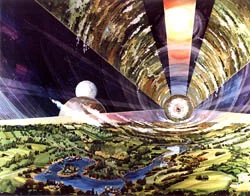
In 1974, Princeton University physicist Gerard K. O’Neill unveiled a design for a floating space colony called an O’Neill Cylinder.
Comprising two cylinders each 20 miles long and 4 miles wide in diameter, the cylinder contains three land areas (totaling 500 square miles) alternating with three windows and three mirrors used to simulate a day-night cycle. The cylinder could provide housing for several million people.
In his original paper entitled The Colonization of Space, O’Neill argues that positive experiences garnered from participating in sports on Earth could be enhanced in space, writing:
“All Earth sports, as well as new ones, are possible in the communities. Skiing, sailing, mountain climbing (with the gravity decreasing linearly as the altitude increases) and soaring are examples. As an enthusiastic glider pilot, I have checked the question of thermal scales: The soaring pilots of the colonial age should find sufficient atmospheric instability to provide them with lift. At high altitudes, man-powered flight — a nearly impossible dream on Earth — becomes easy. A special, slowly rotating agricultural cylinder with water and fish can have gravity 10-2 or 10-3 times that on Earth for skin diving free of pressure-equalization problems. Noisy or polluting sports, such as auto racing, can easily be carried out in one of the cylinders of the external ring.” (O’Neill, 1974)
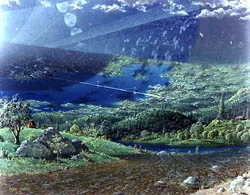
O’Neill argues that a full-size population on one such O’Neill Cylinder would require resources that could be harnessed from the asteroid belt, writing, “The total volume of material needed in a full-size community is 1.4 x109 cubic meters, and the material available in the asteroid belt (from which the later communities will be built) is estimated to be 4 x1017 cubic meters, about one twenty-five hundredth the volume of Earth. For a present world population of 3.9 x 109 people and a growth rate [ref 7] of 1.98% per year (the 1965-71 average), the asteroidal material would last 500 years, corresponding to a 20,000-fold population increase at low population density.” (O’Neill, 1974)
In regards to food, O’Neill states the following, “The two main cylinders of Model 1 should then be able to support up to 10,800 people, and the corresponding ecological limit for a full-size community would be 20 million people. At this limit, all the colonists would have a high standard of living, but in apartment-house living conditions, looking out over farmland. For a community limit of 13-million people, the main cylinders could be kept free of agriculture.” (O’Neill, 1974)
Evidently, the O’Neill Cylinder could provide comfortable accommodations in space, but it will likely not be the only option available on the far-future real-estate market.
Stanford Torus

In 1975, the NASA Summer Study and Stanford University collaborated on a design for a torus or doughnut-shaped space colony called the Stanford Torus.
The design would effectively take an entire landscape and wrap it in a doughnut shape. Stanford University describes it as follows: “The Stanford Torus was designed to house 10,000 people. It was to be a fully self-sufficent colony with the capability to produce food, support manufacturing, and enable high quality residences for its inhabitants. The colony, shown in Fig. 1, is designed as a torus with a diameter of 1.8 km. The habitat tube has a diamter of 430 m. The torus rotates at 1 revolution per minute to create artificial gravity. A stationary mirror at 45° is used to redirect sunlight down to the colony. The inner disk of the torus acts as a docking bay and solar generation area. 10 km away from the station is a tethered solar power generation satellite. This satellite provides the remainder of the power required for the colony that is not generated in the inner disk. A large, flat stationary radiator sits below the inner disk and acts to dissapate waste heat from the station.” (stanford.edu)

~~~~~~~
Clearly, many qualified people have high hopes for humanity’s future endeavors into space and its galactic real estate and energy markets.
What will the future hold? If we last long enough, the options may be bountiful.
Sources:
https://futurism.com/the-kardashev-scale-type-i-ii-iii-iv-v-civilizationhttps://www.universetoday.com/153167/what-is-the-kardashev-scale/https://larryniven.fandom.com/wiki/Ringworldhttps://earthsky.org/space/what-is-a-dyson-sphere/https://www.sciencefocus.com/future-technology/kkardashevs-scale/https://space.nss.org/stanford-torus-space-settlement/http://large.stanford.edu/courses/2016/ph240/martelaro2/https://space.nss.org/o-neill-cylinder-space-settlement/https://wonderopolis.org/wonder/Could-You-Live-in-an-O’Neill-Colony

Xavier Nazzal is a senior who serves as the Executive Online Editor for the Lion Journalism 2022 - 2023 school year. Among other things, Nazzal participates...

